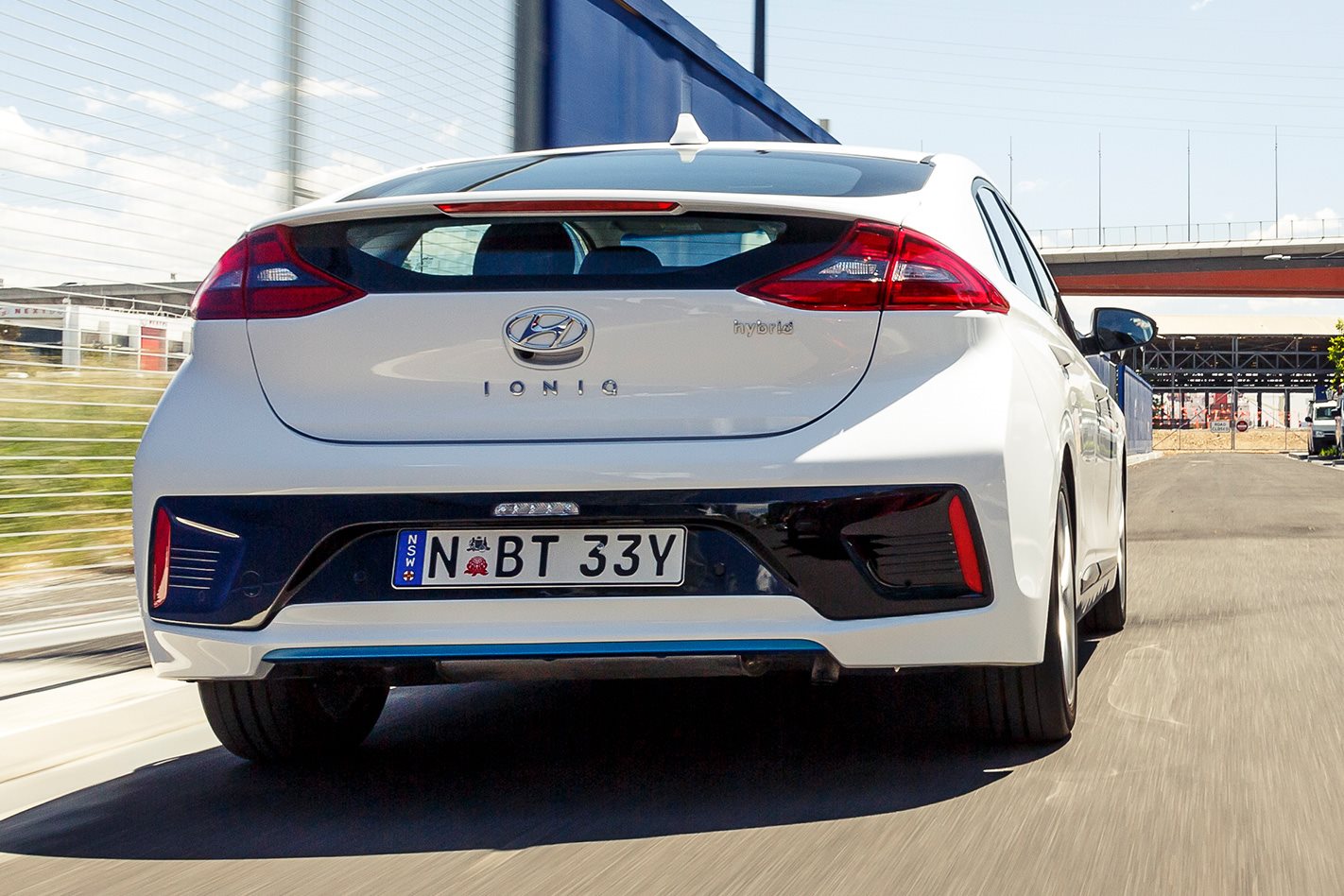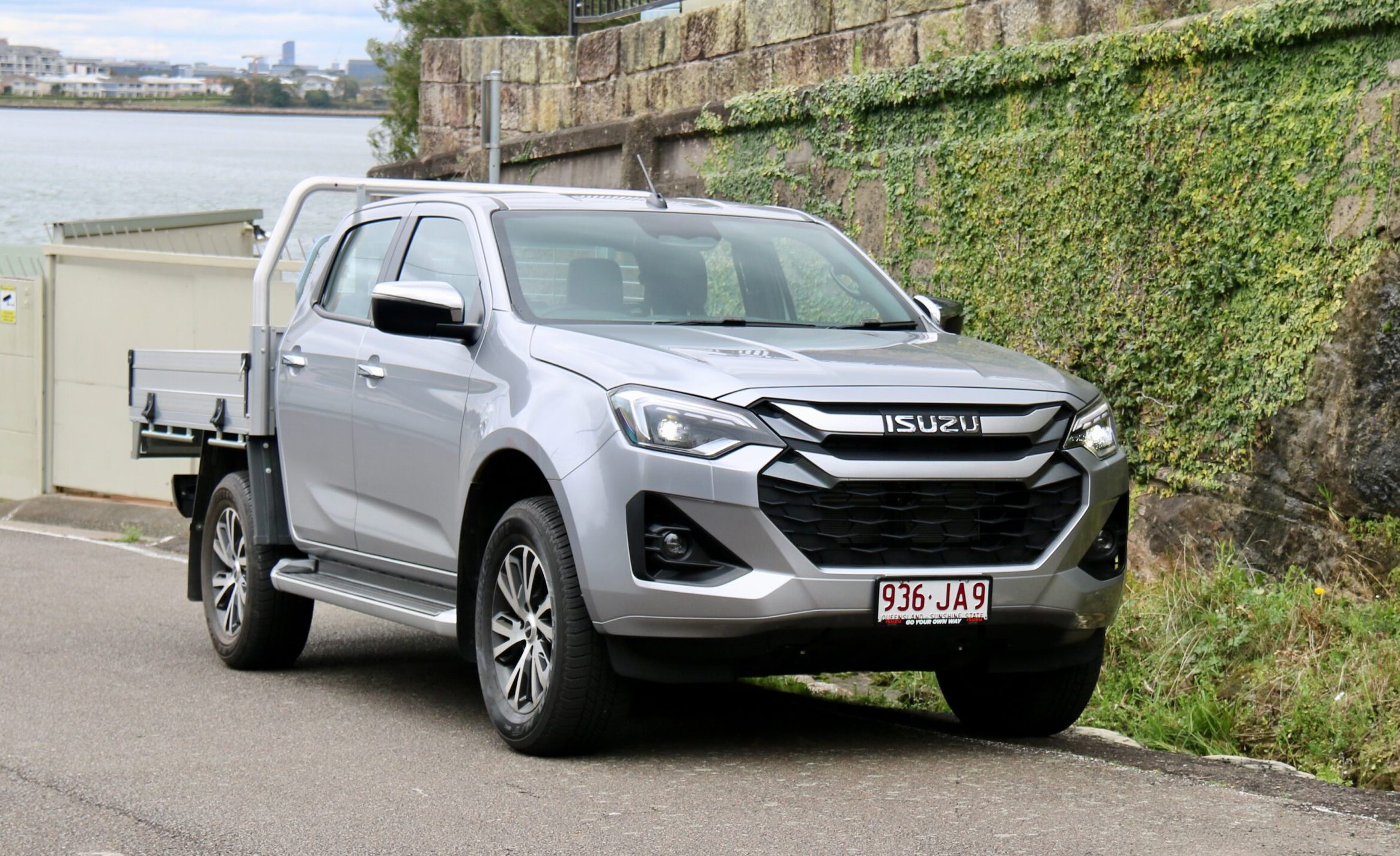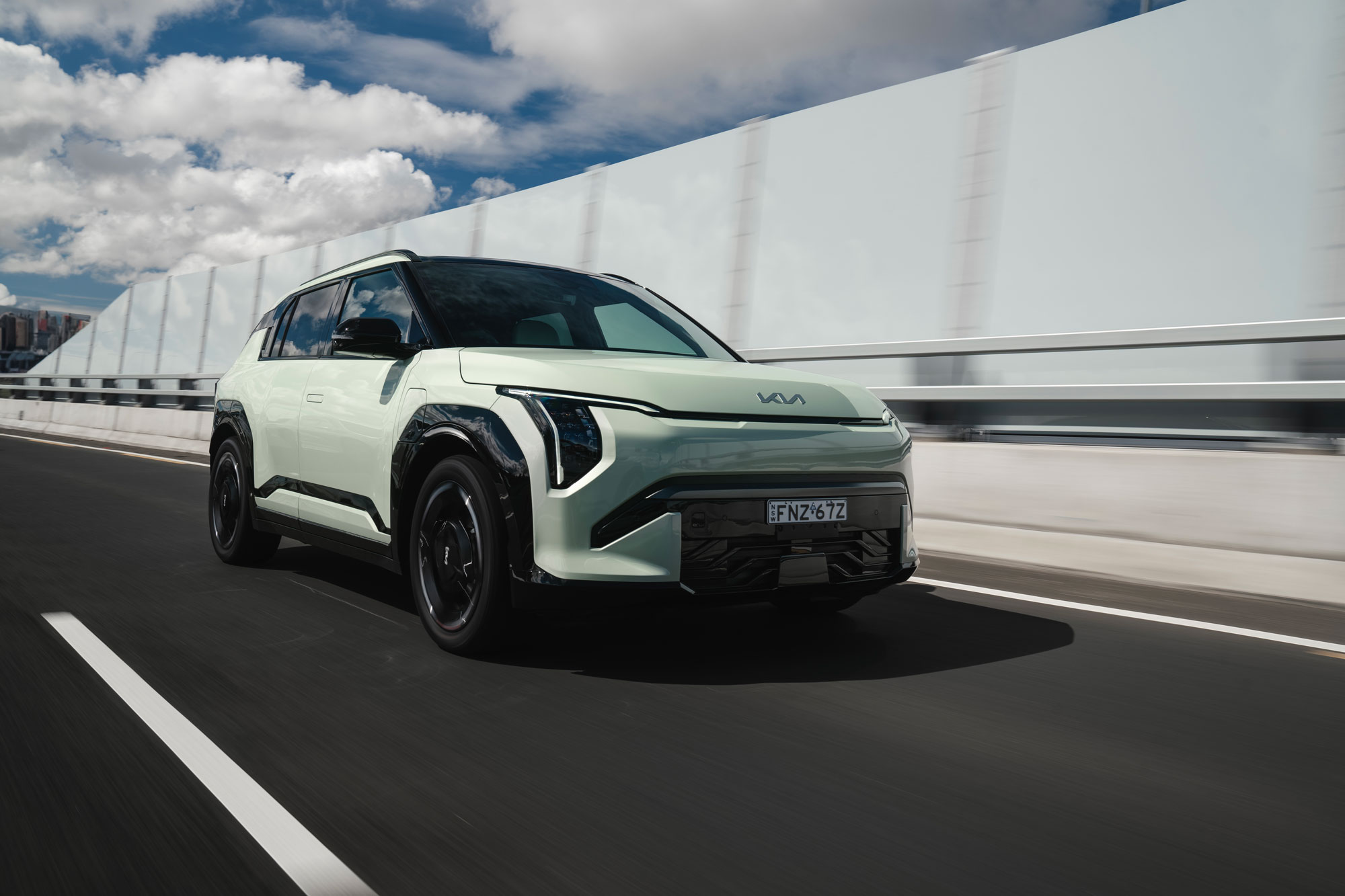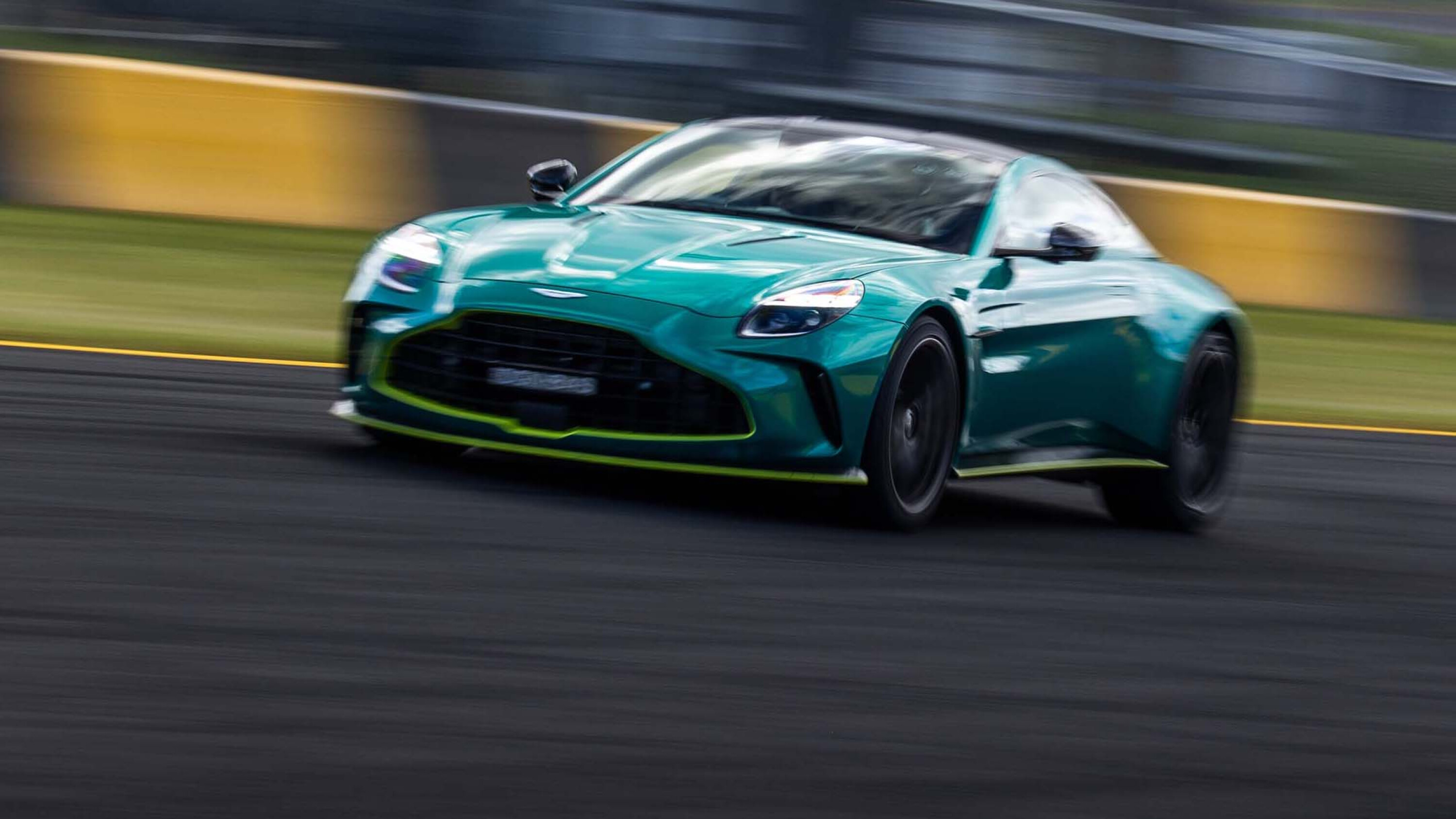LIKE tethered skydiving and any ‘edited for content’ airline movie, the Ioniq Plug-in petrol-electric hybrid exudes more than a hint of entrée alongside its Electric sibling’s culinary smorgasbord. Why not just go for the main?
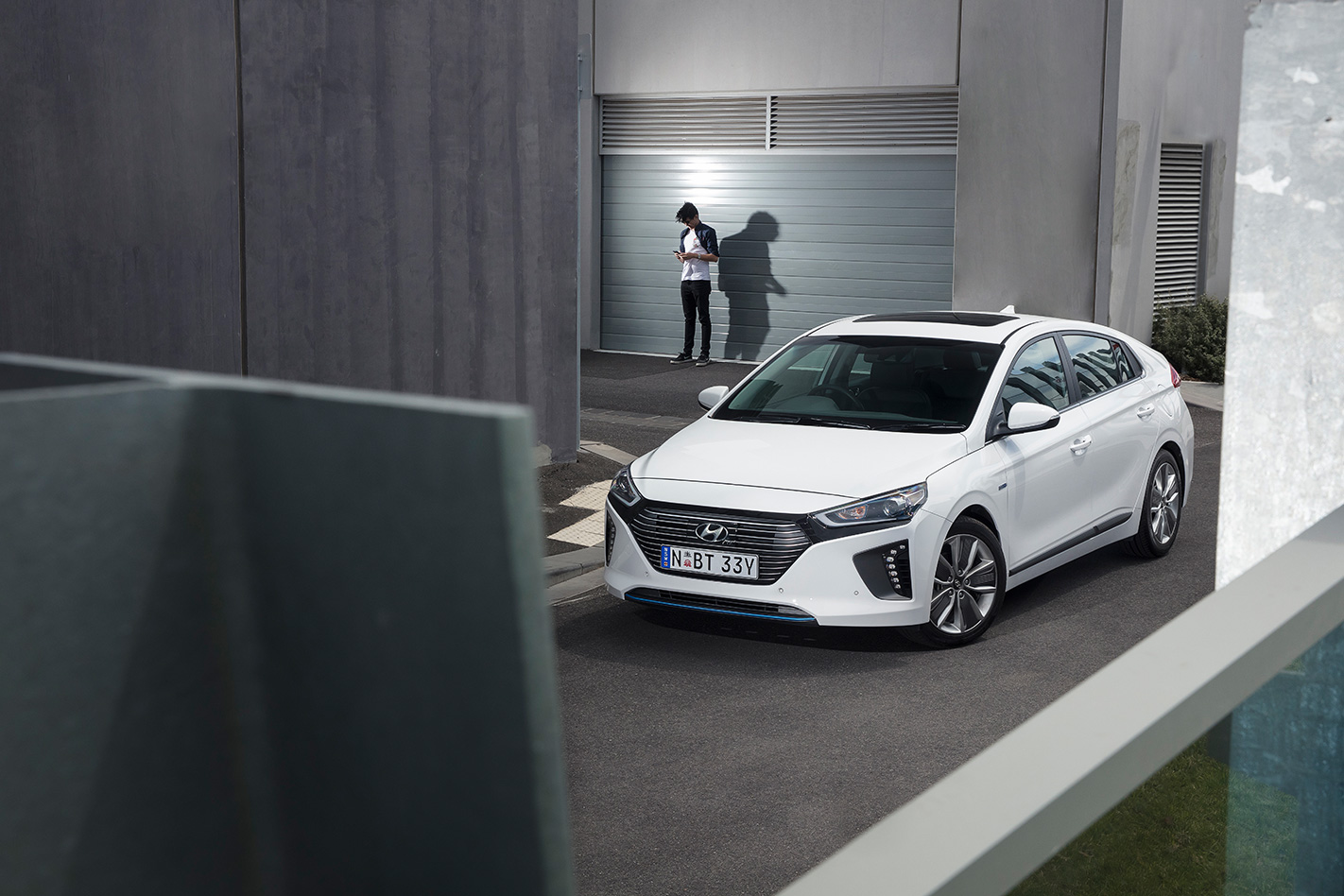
Hyundai’s head-first dive into low-to-zero emissions vehicles is ambitious, with a pair of ‘taster’ electrified Ioniqs for buyers uncertain and/or anxious about committing to the full Ioniq Electric EV experience.
And fair enough. As Hyundai’s Prius, the starter Hybrid from $33,990 brings a 77kW/147Nm 1.6 petrol/six-speed dual-clutch transmission internal combustion engine (ICE) combo with 32kW/170Nm electric motor and 1.56kWh battery assistants, for a 3.4L/100km average. It never runs electrically – unlike in the $41K Plug-in, using the same ICE powertrain but a larger (44kW/170Nm) electric motor and 8.9kWh battery, for up to 63km of EV driving, before switching to petrol (and just 1.1L/100km). Both have total system outputs of 104kW.
Mirroring the successful Mitsubishi Outlander PHEV, it is possible to commute daily in pure-EV mode, as long as the Plug-in is fully charged (up to five hours on a household plug) at the outset. The ICE will kick in when the HEV button is selected or ‘Sport’ is accessed, helping recharge along the way.
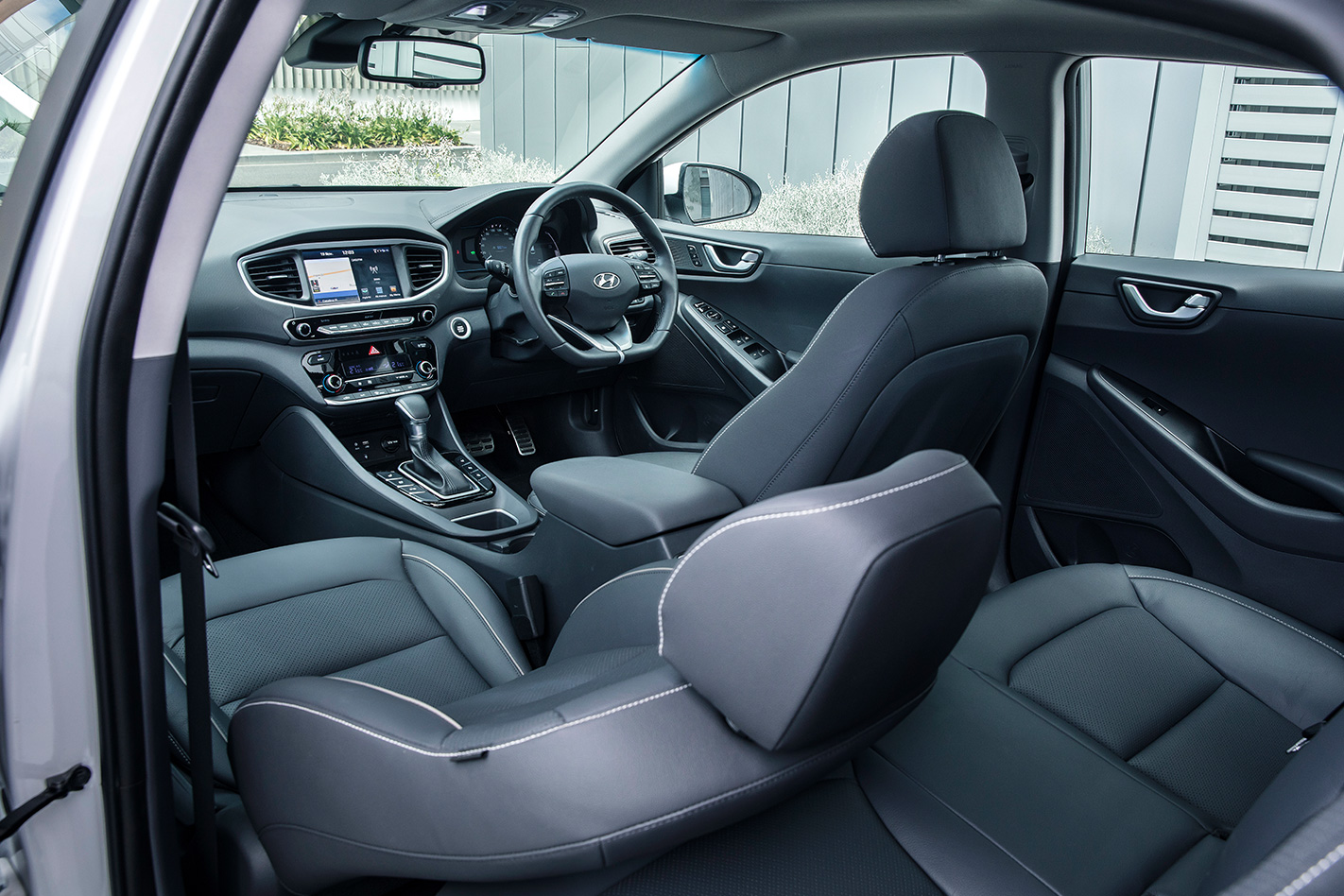
All good so far, especially as the Plug-in’s EV performance is surprisingly eager given the modest output; additionally, the steering is responsive (if remote in feel), with similar handling and roadholding control to the related i30 hatch – further normalising the electrification experience. However, stiff suspension, an unsettled ride and omnipresent droning from the (multi-link) rear end erode the Ioniq’s refinement qualities.
Furthermore, spirited driving drains the volts pretty quickly, and when the ICE does kick in, there’s even more mechanical cacophony to assault ears hitherto lulled into an electric serenity – though the accompanying extra acceleration (and about 900km combined range) is appreciated.
The thing is, for only $4000 more, there’s the near-silent, torquey smoothness of the potent Electric, while still offering 230km of real-world range; the EV is just as spacious and comfy inside, but brings a less mundane dash, gaining electronic transmission controls, flash instruments and stop-and-go adaptive cruise control capability, while ditching the Plug-in’s foot-operated park brake. It simply feels more special inside. And the (torsion beam) rear suspension seems both more absorbent and better-isolated.
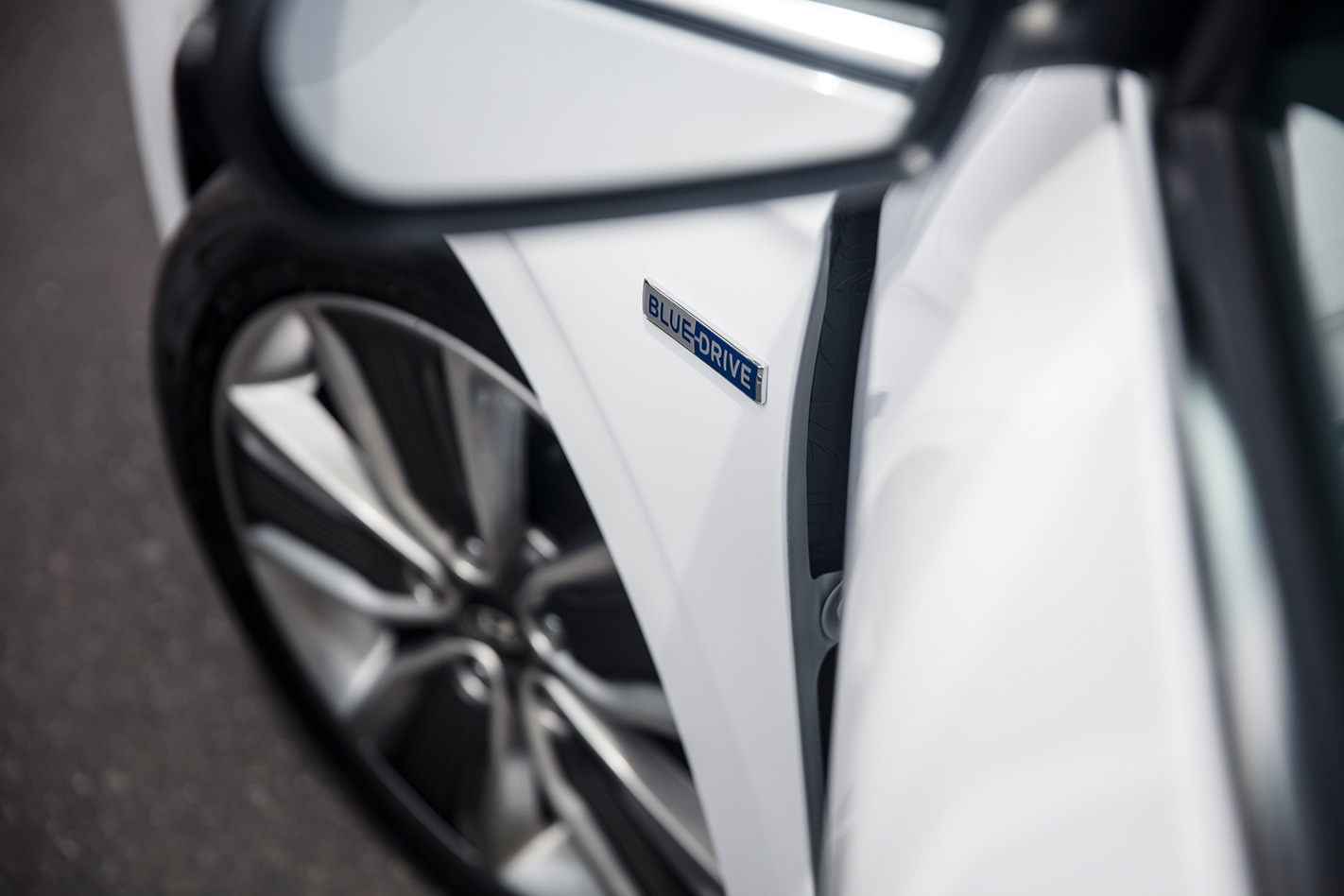
The Plug-in, then, is a capable if flawed gateway EV of questionable value, lacking the charming and enjoyable Electric’s more rounded capabilities. Good as it is, if you’re this close, cut the ICE umbilical cord and savour the superior EV experience the all-battery Ioniq offers.

